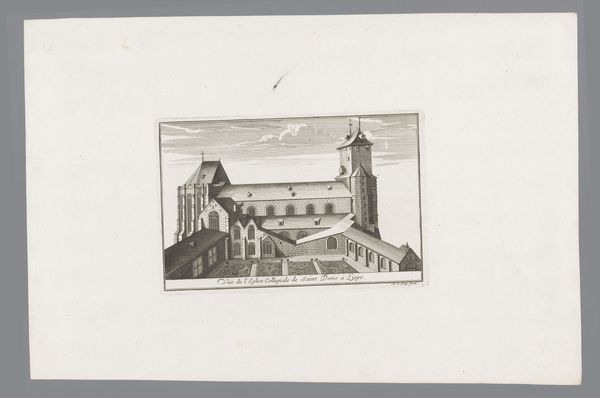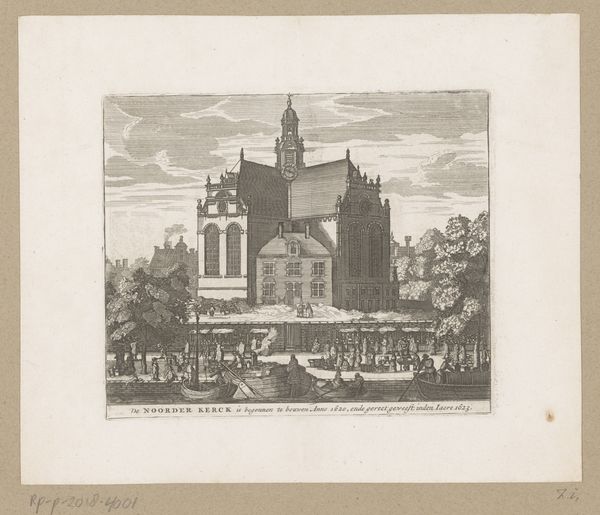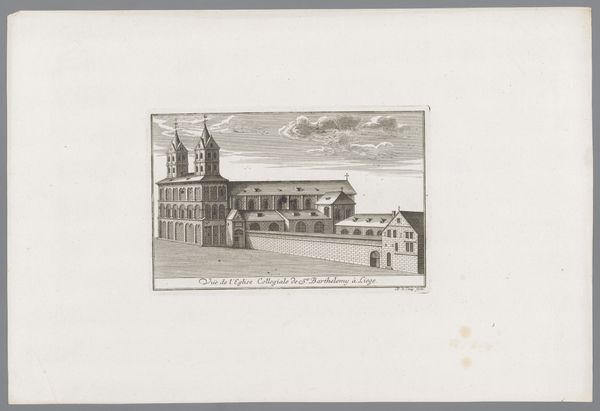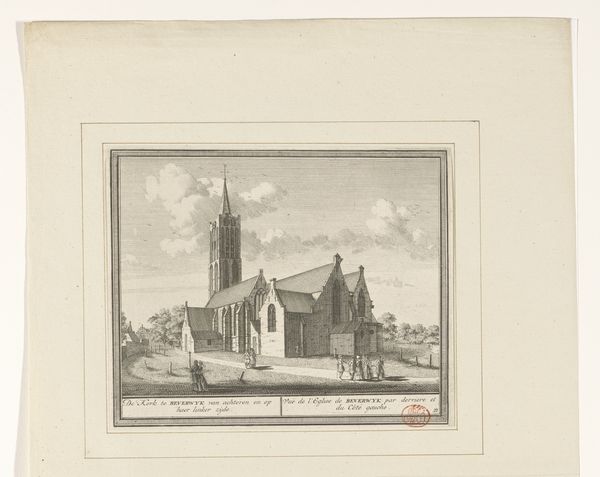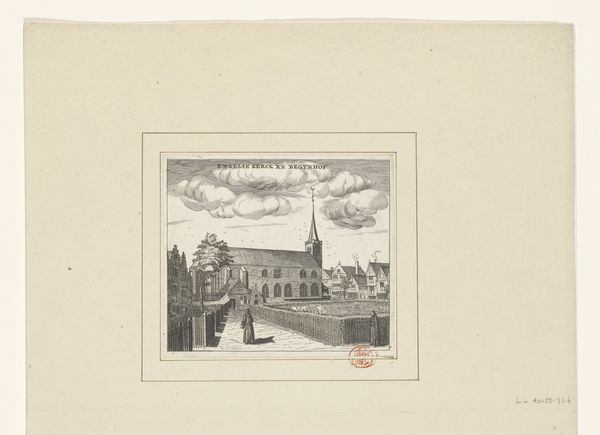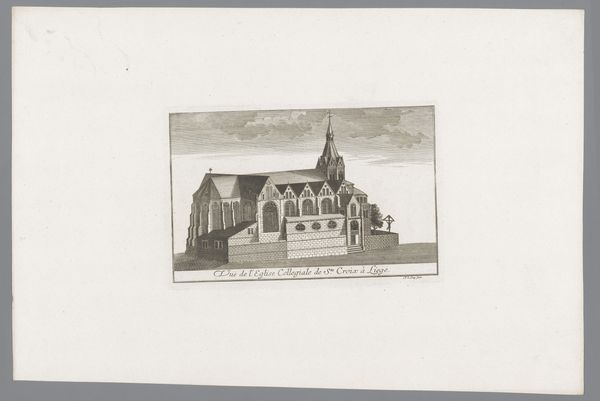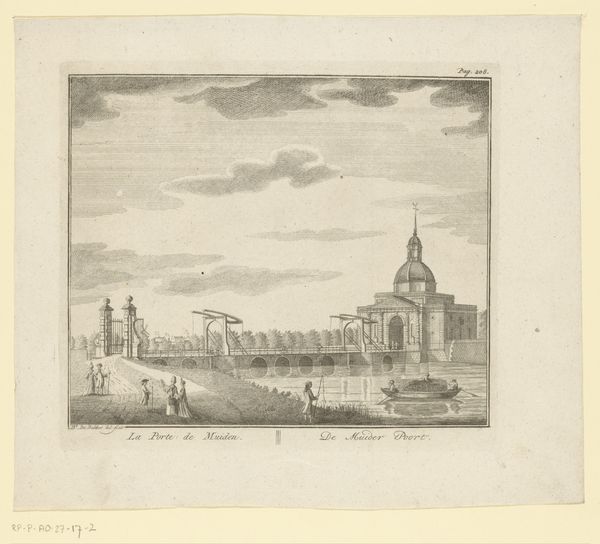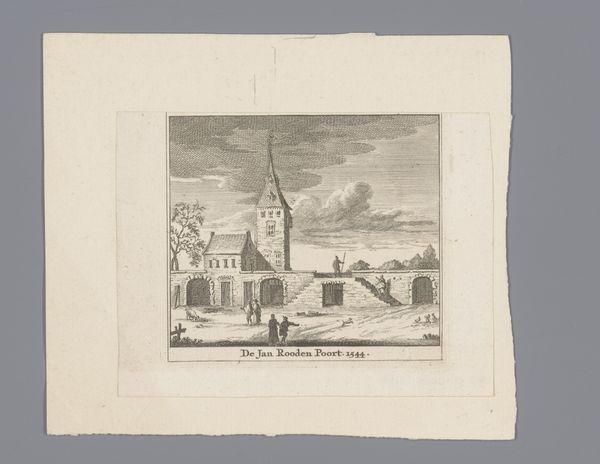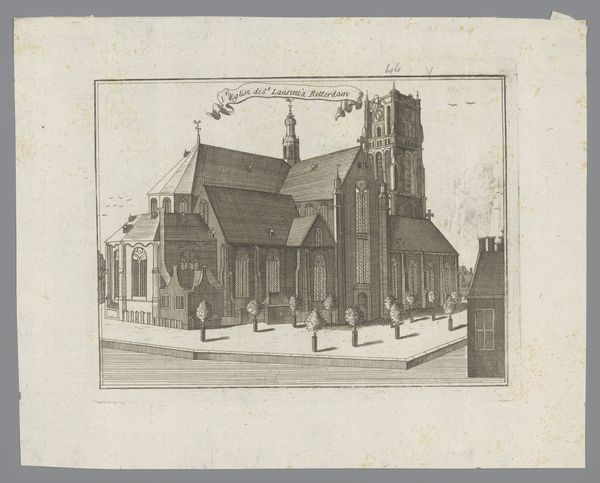
drawing, print, engraving, architecture
#
drawing
#
baroque
# print
#
landscape
#
cityscape
#
engraving
#
architecture
#
realism
Dimensions: height 145 mm, width 198 mm
Copyright: Rijks Museum: Open Domain
Editor: Here we have an engraving titled "Gezicht op de Sint-Pieterskerk in Luik," dating from around 1738 to 1744. The anonymous artist depicts the Saint Peter's Church. The image appears very ordered and precise, which gives it a formal mood. How do you interpret this work? Curator: This piece invites us to consider the role of institutions, like the Church, within society and urban planning. Consider the architectural style: baroque, but with a noticeable emphasis on rational lines, suggesting a period of shifting ideologies. Think about power structures; how does the Church’s physical presence, so dominant in this cityscape, reflect its socio-political influence at the time? Editor: That's interesting, I hadn't thought about the shifting ideologies. So, the focus on realism, combined with the grandeur of the church, is saying something about the Church's position? Curator: Exactly! The 'realism' grounds it, makes it tangible, a real power within the community, not some abstract concept. But who was this 'realism' for? Consider how printmaking made imagery more accessible. Were these images intended to reinforce the Church’s image or simply to document its presence? Editor: It could be a bit of both, right? Making the church seem familiar, but also unmissable and solid. What does the location being in Liège mean? Curator: Liège was, and remains, a complex site. Historically, it stood as an independent Prince-Bishopric, a kind of theocratic state. Therefore, depicting Saint Peter's isn't merely representing a church, it's picturing the heart of that independent power structure. Knowing this shifts our interpretation, doesn’t it? Editor: It completely does. It adds layers of political meaning that I didn’t initially recognize. Curator: Indeed, viewing art through a critical, historical lens opens up avenues for deeper understanding and highlights the intersectionality between art, power, and society. Editor: Thanks for highlighting those aspects! Now, looking at the church, I will always associate it with the socio-political climate of Liège during that time.
Comments
No comments
Be the first to comment and join the conversation on the ultimate creative platform.


